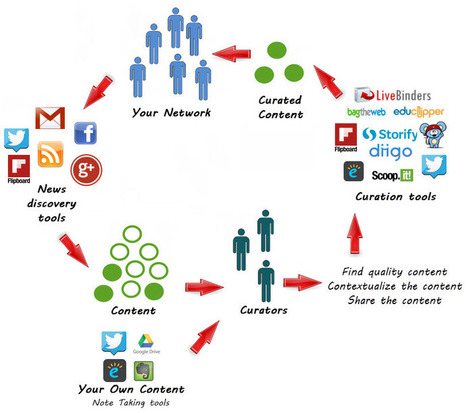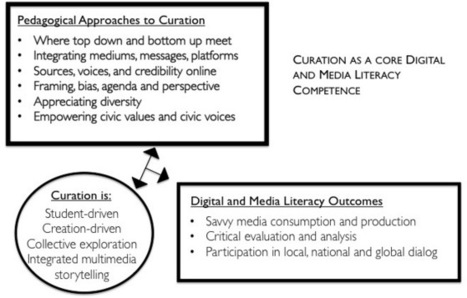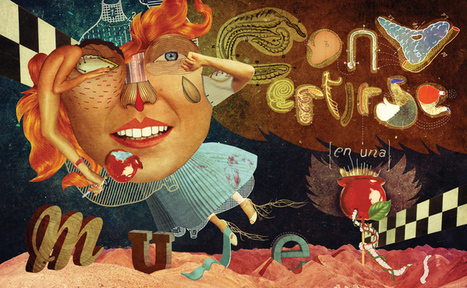Get Started for FREE
Sign up with Facebook Sign up with X
I don't have a Facebook or a X account
 Your new post is loading... Your new post is loading...
 Your new post is loading... Your new post is loading...

joanna prieto's curator insight,
May 24, 2013 11:42 AM
Se ve genial la herramienta, la probaré y les cuento! @JoannaPrieto 
reyhan's curator insight,
December 12, 2013 1:14 PM
EdCanvas is a web service which allows you to search, find, clip and collect any kind of content, from text to video clips and to organize it into visual boards for educational and learning purposes.
Differently than Pinterest, EdCanvas is specifically targeted at the education world and at schools and teachers, and it makes possible not just to collect "images" from web pages, but to collect and organize whichever content elements you want, including full web pages.
EdCanvas boards also offer the ability to easily reposition each item in the collection according to your preferences and it provides a number of pre-set layout options for displaying content in your boards.
The strongest feature for EdCanvas is an integrated search engine, which allows you to search for images, websites, video clips across Google, YouTube and Flickr, and lets you grab and drop any relevant result into anyone of your collections. Furthermore Edcanvas can connect directly to your Dropbox or Google Drive giving you access to all of your personal library files.

Diana Juárez's curator insight,
April 26, 2015 1:27 PM
La curación como herramienta pedagógica para propiciar el pensamiento crítico en la educación. 
Bárbara Mónica Pérez Moo's curator insight,
August 12, 2015 9:16 AM
Habilidades digitales y pensamiento crítico.
Sample Student's curator insight,
May 5, 2015 10:14 PM
We often ask our students to create annotated bibliographies, and this focuses on their capacity to evaluate and make decisions about the validity, reliability and relevance of sources they have found. using Scoop.it, we can ask them to do much the same thing, but they will publish their ideas for an audience, and will also be able to provide and use peer feedback to enhance and tighten up their thinking. This is relevant to any curriculum area. Of course it is dependent on schools being able to access any social media, but rather than thinking about what is impossible, perhaps we could start thinking about what is possible and lobbying for change.
Sample Student's curator insight,
May 5, 2015 10:18 PM
We often ask our students to create annotated bibliographies, and this focuses on their capacity to evaluate and make decisions about the validity, reliability and relevance of sources they have found. Using Scoop.it, we can ask them to do much the same thing. But they will publish their ideas for an audience, and will also be able to provide and use peer feedback to enhance and tighten up their thinking. This is relevant to any age, and any curriculum area. Of course it is dependent on schools being able to access social media. But rather than thinking about what is impossible, perhaps we should start thinking about what is possible, and lobbying for change. Could you use a Scoop.it collection as an assessment task? |

terrymc's curator insight,
September 23, 2013 10:21 AM
Curation can be used as an authentic activity with many disciplines to enable students to critically evaluate resources for a common interest. Would like to hear more about discipline based projects.

Karyn McGinley's curator insight,
October 22, 2013 7:13 PM
I am eager to delve into this further....

Robin Good's curator insight,
April 30, 2013 6:11 PM
The Avoca Learning platform is a web service which facilitates the finding, collection and organizing of vetted learning resources from dozens of the leading educational sites. The platform already offers over 20,000 resources from over 35 leading education sites. In the near future new educational resources in the fields of of Language Arts/Reading, and History/Social Studies will be added. Users can search the already vetted and curated resources and then collect and organize them into specific "albums" dedicated to specific topics. From the official site: "The Avoca Learning Platform brings together thousands of online learning resources that students, parents and teachers can search, manage and share. Whether you’re looking for a very specific resource for a single concept (equivalent fractions, for example) or a collection of content that’s aligned to an entire course, the Avoca Learning Platform provides a powerful curation engine to bring you the resources you need, when you need them." "Avoca Learning helps to solve that problem by finding and indexing the best digital content, allowing users to organize and save that content, and then making it easy to share that curated content with other users." Curated results can also be filtered by subjects, topics, resource type, media type and grade level. Free to use. Try it out now: http://avocalearning.com Video tutorial on how "search" works in Avoca: http://vimeo.com/63171301 How it works: http://www.avocalearning.com/how-it-works/ 
Raquel Oliveira's curator insight,
May 2, 2013 2:56 PM
Ferramenta para filtrar as informações relevantes da net e aprimorar a curadoria de conteúdo para fins de estudo ! Vale a consulta . |



















An absolutely significant skill in any research or investigation, for educators and learners in the digital age - the curation of content- with a clear focus or question in mind, the capacity to target a search field, sift through, reflect on and make decisions about the most suitable resource or evidence to use. What a great learning experience.
Forstå og komme i gang med kurator tjenester.